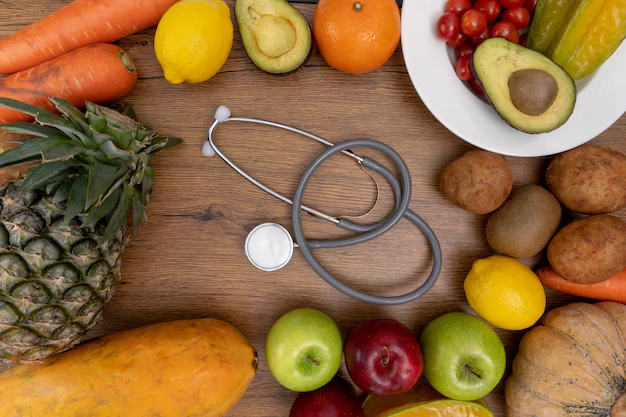Discover the Best Foods for Managing Hypertension
Managing hypertension, or high blood pressure, is crucial for maintaining overall health and preventing complications like heart disease or stroke. One of the most effective ways to control blood pressure is through diet. Food isn't just medicine—it's a lifestyle choice that can profoundly impact well-being. Let’s explore which foods can help keep your blood pressure in check, and later, how financial resources can make this healthy eating more accessible.
Power Foods for Hypertension
Leafy Greens
Leafy greens such as spinach, kale, and Swiss chard are rich in potassium, which helps your kidneys eliminate more sodium through your urine. This action can help lower your blood pressure.
Berries
Rich in flavonoids, berries—especially blueberries—can prevent hypertension and help lower blood pressure. Consider adding a serving to your breakfast or as a healthy snack option.
Beetroot
Beets are high in nitrates, which help open blood vessels and lower blood pressure. Roasting them, enjoying in a salad, or sipping on beet juice are ways you can incorporate beets into your diet.
Oats
Oats contain beta-glucans, which can reduce cholesterol levels—a contributor to heart health. Start your day with a bowl of oatmeal for a heart-healthy breakfast choice.
Fatty Fish like Salmon and Mackerel
These fish are high in omega-3 fatty acids, which can help lower blood pressure, reduce inflammation, and decrease triglycerides.
Garlic
The sulfur compound allicin in garlic can help lower blood pressure, particularly if you consume it fresh and raw.
Bananas
Bananas are another potassium-rich food that can reduce tension in blood vessel walls, thus helping to manage blood pressure efficiently.
Making Healthy Choices Affordable
Eating a well-balanced diet rich in the foods that help manage hypertension can sometimes be perceived as costly. However, various programs can assist individuals who need financial support to adopt these lifestyle changes.
Government Aid Programs
Programs like the Supplemental Nutrition Assistance Program (SNAP) can help low-income individuals and families afford healthy, nutritious foods.Financial Assistance for Groceries
Many communities offer food banks and community programs that provide healthy food options, which can help reduce grocery bills significantly.Debt Relief Options
Restructuring your finances with debt relief options can free up some income, allowing for a larger budget dedicated to healthier food choices.Credit Card Solutions
Consider credit cards with cash back on grocery purchases or introductory zero-interest periods on new purchases to ease the burden of maintaining a healthy diet.
Educational Opportunities
Increasing awareness about nutrition through educational programs—often available online for free—can empower individuals to make informed choices about their diets and health.
Quick Guide to Affordable Health & Financial Assistance
- 🛒 SNAP Benefits: Access to monthly food benefits for eligible families.
- 🍽️ Local Food Banks: Find community resources for free food supplies.
- 💳 Cash-Back Credit Cards: Use for groceries to save money on essential purchases.
- 🏠 Debt Management Plans: Reduce monthly payments and relieve financial strain.
- 🎓 Online Nutrition Courses: Learn dietary essentials to make cost-effective and healthy meal choices.
Embracing a diet rich in fruits, vegetables, whole grains, and lean proteins not only helps manage hypertension but also encourages long-term health commitment. Coupling these efforts with financial assistance and educational resources can ensure a sustainable and health-conscious lifestyle for everyone, regardless of income.

Related Topics
- a 66 Year Old Female With a History Of Hypertension
- Are Eggs Bad For Hypertension
- Are Eggs Good For Hypertension
- Are Endocrine Disorders Causing Hypertension Rare
- Can Adderall Cause Hypertension
- Can Alcohol Cause Hypertension
- Can Allergies Cause Hypertension
- Can Anemci People Get Hypertension
- Can Anemia Cause Hypertension
- Can Antibiotics Cause Hypertension